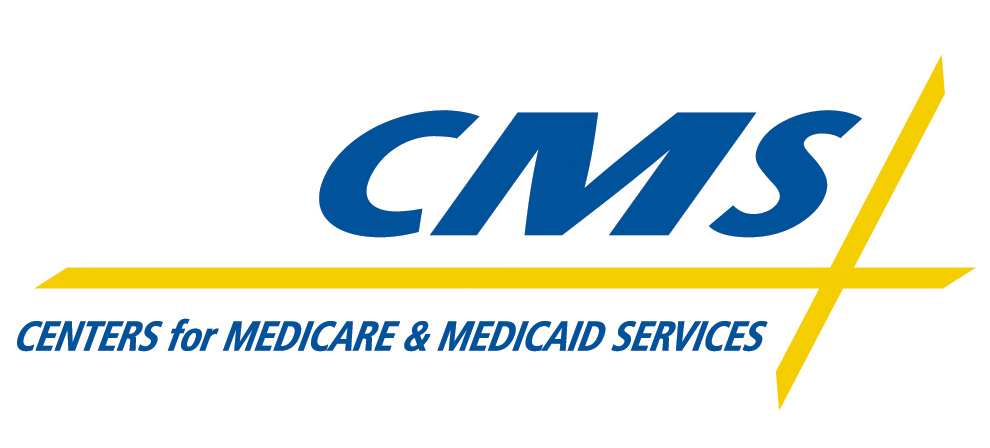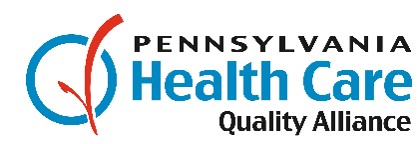In this article, we will cover pay-for-performance (PFP) in detail.
This article is Part 3 of our 6-part series simplifying alternative payment models in healthcare.
If you missed Part 1, or want to jump around to other parts of the series, here are the links:
- Alternative Payment Models Made Simple – Overview (Part 1 of 6)
- Alternative Payment Models Made Simple – Pay for Reporting (PFR) (Part 2 of 6)
- Alternative Payment Models Made Simple – Pay for Performance (PFP) Part 3 of 6) (THIS ARTICLE :))
- Alternative Payment Models Made Simple – Bundled Reimbursements (Part 4 of 6)
- Alternative Payment Models Made Simple – Accountable Care Organizations (ACOs) (Part 5 of 6)
- Alternative Payment Models Made Simple – Patient Centered Medical Homes (PCMH) (Part 6 of 6)
Introduction to Pay-For-Performance (PFP)
As we discussed in our overview article in this series, the concept of pay-for-performance (PFP) takes pay-for-reporting (PFR) one step further.
Under pay-for-performance, providers and institutions are still reporting their data…
…but now they are accountable to the performance as shown in the data.
Pay-for-performance programs have the same 3 consistent components as pay-for-reporting – the payer, sets of target metrics, and the provider or institution. [You can read more about these fundamental components HERE – “Alternative Payment Models Made Simple – Pay-For-Reporting (Part 2 of 6).”]
Since you already understand how these components interact, we’ll spend the rest of this article highlighting a few real-world examples, discussing more about what metrics comprise pay-for-performance programs, and considering the implications for providers and institutions.
The Payers & Metrics
Technology is expanding the capability of quality-based payment systems to track and reimburse for care that is delivered coordinated.1 [1. Sura A and Shah NR. Pay-for-performance initiatives: Modest benefits for improving healthcare quality. AHDB. 2010;3:135-142.] They are getting more and more sophisticated in building and imposing pay-for-performance programs on their provider networks.
Some of the first pay-for-performance programs emerged around the turn of the century.
Remarkably, many of these programs were built with quality metrics that payers built on their own from scratch.
Now, the majority of them either adopt or adapt prominent quality metrics. As we introduced in Part 2 of this series, one of the most popular is the HEDIS metric set developed and maintained by NCQA. A recent study by the Robert Wood Foundation assessing pay-for-performance programs found the majority utilized HEDIS metrics as their basis of quality assessments.2 [2. Christianson JB, Leatherman S, Sutherland K. Paying for quality: understanding and assessing physician pay-for-performance initiatives. Robert Wood Johnson Foundation. Available … Continue reading
Let’s start with some examples from public payers.
Public

Multiple state Medicaid programs have built pay-for-performance programs around HEDIS metrics including Massachusetts, California, Michigan, New York, and Rhode Island. A study by the Robert Wood Foundation found 28 states had pay-for-performance programs in place by 2006.[2. Christianson JB, Leatherman S, Sutherland K. Paying for quality: understanding and assessing physician pay-for-performance initiatives. Robert Wood Johnson Foundation. Available at: http://www.rwjf.org/content/dam/farm/reports/issue_briefs/2007/rwjf19901/subassets/rwjf19901_1. Accessed March 2016.]
Private

One of the longest-running pay-for-performance programs has been established by the Integrated Healthcare Association near the turn of the century as a collaboration of six California health plans. Today, participants include 10 health plans and over 200 California physician organizations caring for over 9 million Californians enrolled in commercial health maintenance organization (HMO) and point of service (POS) products.3 [3. Integrated Healthcare Association. Value based P4P. Available at: http://www.iha.org/our-work/accountability/value-based-p4p. Accessed March 2016.]
The latest program evaluates providers across 55 quality metrics in clinical (e.g., cardiovascular disease, diabetes, maternity, musculoskeletal, prevention, respiratory), value-based meaningful use of health IT, value-based patient experience, and resource use domains.4 [4. Integrated Healthcare Association. Recommended Measure Set for Measurement Year 2016. Available at: http://www.iha.org/sites/default/files/resources/vbp4p-measure-set-my2016.pdf. Accessed March … Continue reading Of note, these are constructed from the HEDIS metrics we’ve already learned about in this article series.
In addition, independent non-profit organizations have formed to address healthcare quality at the state level.


The Oregon Health Care Quality Corporation (Quality Corp) was founded in 2000. The organization targets providers and institutions with quality metric tracking and reporting. The Committee is a multi-stakeholder advisory group composed of providers, health insurers, employers, consumers, policymakers and other experts on health care analysis and reporting. The Committee ensures the production of transparent data and analytics that are highly valued and actionable to improve the health outcomes of Oregonians. Provider and institution results are published for all to see.5 [5. The Oregon Health Care Quality Corporation. Measurement and reporting. Available at: http://www.q-corp.org/our-work/measurement-reporting. Accessed March 2016.]
The Pennsylvania Health Care Quality Alliance (PHCQA) is a nonprofit coalition of health care providers and insurers launched in March 2008. Their performance tool includes 47 health care quality and experience measures. Similar to the Oregon group, PHCQA publishes provider and institution results for public review.6 [6. Pennsylvania Health Care Quality Alliance. Reports. Available at: http://www.phcqa.org/reports/. Accessed March 2016.]
Switching to the direct health plan side, we’ll start with Anthem BlueCross BlueShield of New Hampshire.

Anthem Blue Cross and Blue Shield of New Hampshire began rewarding practices for implementing preventive measures (e.g., cancer screening, well-child exams, immunizations). Network providers who ranked in the top 25% of adherence to metrics relative to their peers received an additional $20 per patient per year.7 [7. Sura A and Shah NR. Pay-for-performance initiatives: Modest benefits for improving healthcare quality. AHDB. 2010;3:135-142.]

Excellus, covering about 300,000 members, has established a unique pay-for-performance collaboration with the Rochester Individual Practice Association (RIPA) physician group. RIPA has about 3,200 community physicians.
In their program, Excellus agreed to shared-savings programs that contribute dollars to the RIPA Value of Care Plan. RIPA contributes its entire withhold pool, approximately 10 percent of the capitation from Excellus, to their pay-for-performance program. The Value of Care distribution to RIPA physicians is between 50 percent and 150 percent of their withheld contribution, based on performance and shared savings. The average P4P return for a RIPA primary care physician has ranged from $4,000 to $12,000.8 [8. The Commonwealth Fund and the Robert Wood Johnson Foundation. Physician Pay-for-Performance in Medicaid: A Guide for States. Available at: … Continue reading

On the institution side, the Premier Hospital Quality Incentive Demonstration (HQID) sponsored by Premier, Inc. and Centers for Medicare and Medicaid Services (CMS) began in 2003. This program included nearly 300 hospitals across 36 states. were given bonuses based on performance for five conditions: (1) acute myocardial infarction; (2) coronary artery bypass graft; (3) heart failure; (4) community-acquired pneumonia; and (5) hip and knee replacement. The quality measures for these five conditions were selected based on clinical evidence and metrics recognized by various agencies and organizations in the healthcare quality improvement industry.9 [9. Litaker JR and Chou JY. Briefing Document: Review of performance measures to support a quality-based payment program. 2012. Available at: … Continue reading

The Maryland Health Services Cost Review Commission established the Quality-base Reimbursement Program (QBR) in 2009 with the same set of metrics as Premier’s HQID. The measures evolved to be continually relevant, however, as was intended by the original program structure.10 [10. Litaker JR and Chou JY. Briefing Document: Review of performance measures to support a quality-based payment program. 2012. Available at: … Continue reading
Emerging Pay-for-Performance Programs
Before we leave our discussion of pay-for-performance alternative payment model programs, I want to highlight how they are evolving.
Those of you working in oncology are likely very familiar with the concept of oncology pathways. In short, oncology pathways are protocol-like treatment guidelines for specific cancer types. They prescribe many aspects of care from treatment choice to timeline to specialist visit, etc. The pathways are said to be heavily clinically-driven and evidence based. But ultimately, they are designed to reduce costs, ostensibly by reducing unnecessary variability in care from patient to patient and provider to provider within any one given cancer type.
Pathways are relevant to our pay-for-performance discussion because providers are being incentivized with payment to treat their patients on pathway. Typically, recognizing that not every patient can be treated the same due to individual differences, the reward is offered at some threshold for achievement – e.g., 75% to 80% on pathway.
The Impact for Providers & Institutions
Given the proliferation of payer pay-for-performing programs, the burden for providers is growing.
In fact, a study recently quantified the burden of reporting on quality measures.
They found that each year, physician practices spend, on average, 785 hours per physician and more than $15.4 billion dealing with the reporting of quality measures.[10. Casalino LP, Gans D, Weber R, et al. US physician practices spend more than $15.4 billion annually to report quality measures. Health Affairs. 2016;35:401-406.]
Compliance with a single program consists of at least the following:
- Identifying included quality metrics
- Matching their patients to each appropriate quality metric (e.g., diabetics >65 years old)
- Code claims appropriately within the pay-for-performance program
- Aggregate and analyze data
- Report data appropriately – right format and right schedule
- Hiring and/or training staff / third parties for all of the above
Now consider that each provider or institution has upwards of 5 to 15 different payers comprising 80% of their payer mix. If just a fraction of these have mandatory or optional programs, the effort for the process outlined above is exponentiated!
Wrap-Up: Pay-for-Performance
We’ve seen how pay-for-performance programs are built similarly as pay-for-reporting programs.
We introduced how the three key components – payers, metrics, providers – interact to operationalize these types of alternative payment programs in the previous article in this series.
In this article, we explored some examples of just how public and private payers are implementing these programs.
We also showed how the lift is getting heavier and heavier for providers and institutions. Not only are the patient identification, data collection, data analysis, and reporting responsibilities significant, but also the effort is exponential when more than one payer imposes a program.
All pay-for-performance programs have two things in common –
- they require reporting of certain quality metrics
- they reward (or penalize) providers and institutions for reporting (or not reporting) data tied to pre-specified quality metrics.
In the next article in this series titled “Alternative Payment Models Made Simple,” we’ll tackle another commonly employed alternative payment model in healthcare today – bundled reimbursements.
Read the next article in this series, “Alternative Payment Models Made Simple – Bundled Reimbursement (Part 4 of 6)” by clicking HERE.
In the meantime, be sure to sign up for our newsletter so you’ll get our articles delivered automatically to you immediately when they’re published.
References
| 1 | [1. Sura A and Shah NR. Pay-for-performance initiatives: Modest benefits for improving healthcare quality. AHDB. 2010;3:135-142.] |
|---|---|
| 2 | [2. Christianson JB, Leatherman S, Sutherland K. Paying for quality: understanding and assessing physician pay-for-performance initiatives. Robert Wood Johnson Foundation. Available at: http://www.rwjf.org/content/dam/farm/reports/issue_briefs/2007/rwjf19901/subassets/rwjf19901_1. Accessed March 2016.] |
| 3 | [3. Integrated Healthcare Association. Value based P4P. Available at: http://www.iha.org/our-work/accountability/value-based-p4p. Accessed March 2016.] |
| 4 | [4. Integrated Healthcare Association. Recommended Measure Set for Measurement Year 2016. Available at: http://www.iha.org/sites/default/files/resources/vbp4p-measure-set-my2016.pdf. Accessed March 2016.] |
| 5 | [5. The Oregon Health Care Quality Corporation. Measurement and reporting. Available at: http://www.q-corp.org/our-work/measurement-reporting. Accessed March 2016.] |
| 6 | [6. Pennsylvania Health Care Quality Alliance. Reports. Available at: http://www.phcqa.org/reports/. Accessed March 2016.] |
| 7 | [7. Sura A and Shah NR. Pay-for-performance initiatives: Modest benefits for improving healthcare quality. AHDB. 2010;3:135-142.] |
| 8 | [8. The Commonwealth Fund and the Robert Wood Johnson Foundation. Physician Pay-for-Performance in Medicaid: A Guide for States. Available at: http://www.allhealth.org/briefingmaterials/PhysicianP4PinMedicaid-Aguideforstates-679.pdf. Accessed March 2016.] |
| 9 | [9. Litaker JR and Chou JY. Briefing Document: Review of performance measures to support a quality-based payment program. 2012. Available at: https://www.hhsc.state.tx.us/about_hhsc/AdvisoryCommittees/med-chip-qbp/docs/Quality-Based-Payment-Advisory-Committee-report-from-Litaker-Group.pdf. Accessed March 2016.] |
| 10 | [10. Litaker JR and Chou JY. Briefing Document: Review of performance measures to support a quality-based payment program. 2012. Available at: https://www.hhsc.state.tx.us/about_hhsc/AdvisoryCommittees/med-chip-qbp/docs/Quality-Based-Payment-Advisory-Committee-report-from-Litaker-Group.pdf. Accessed March 2016.] |
